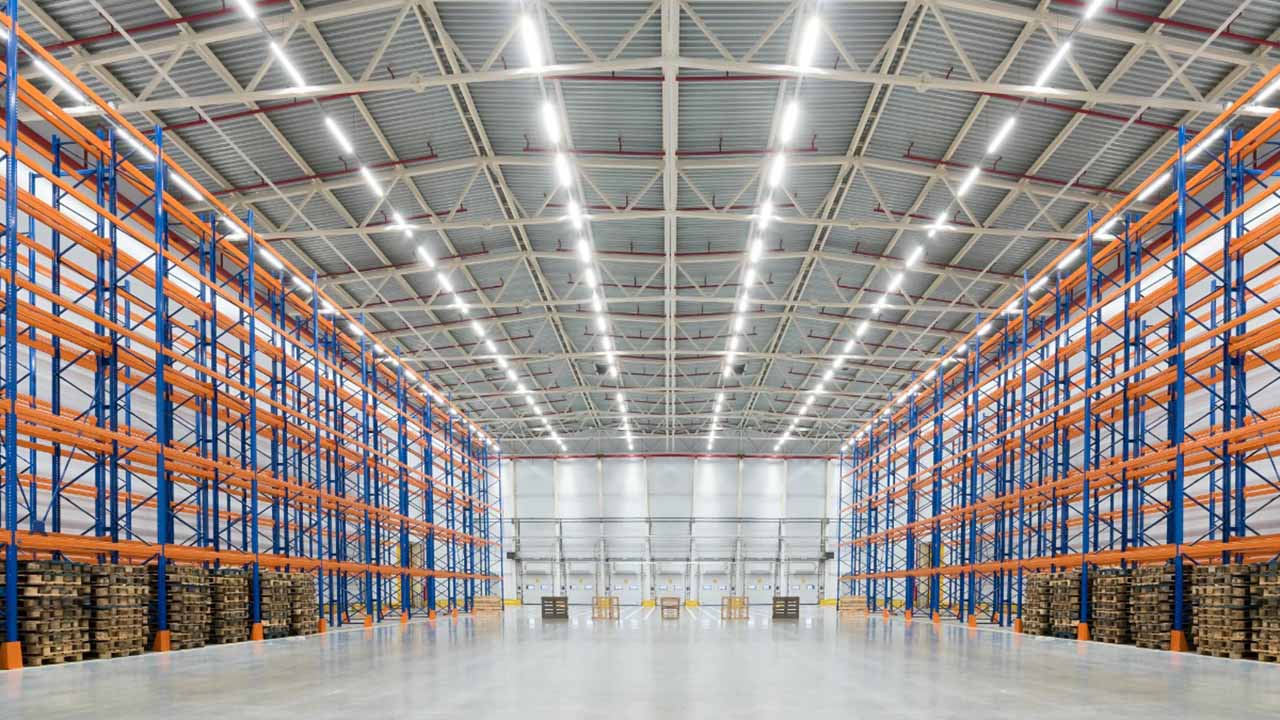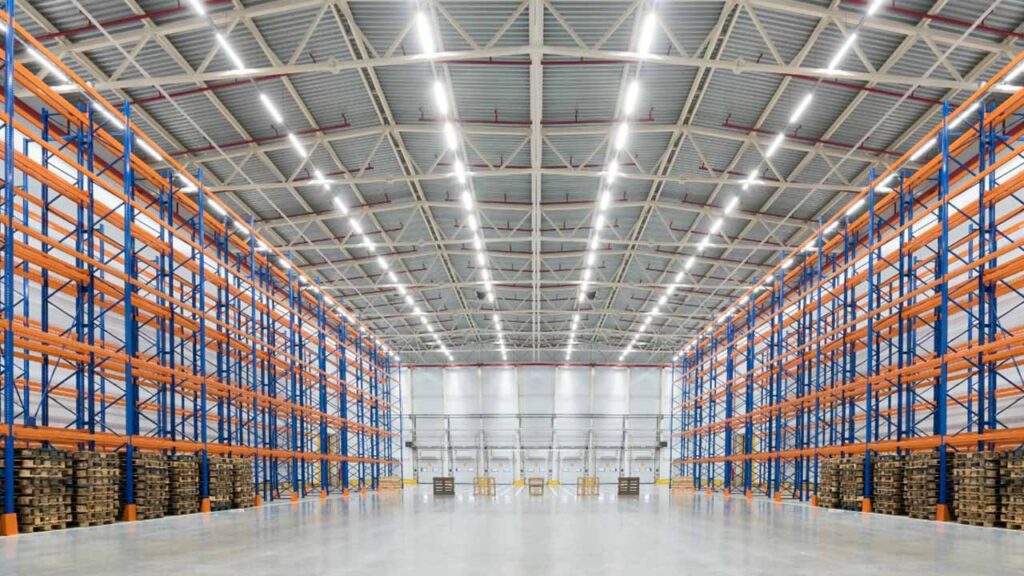
In the dynamic landscape of supply chain management, optimizing warehouse capacity stands as a critical imperative for businesses seeking to enhance efficiency, reduce operational costs, and stay agile in the face of evolving market demands. The strategic utilization of warehouse space not only ensures seamless inventory management but also contributes significantly to the overall competitiveness of a company.
This exploration delves into the art and science of optimizing warehouse capacity, offering insights into key strategies and methodologies that empower businesses to make the most of their storage infrastructure.
What is warehouse capacity?

It refers to the maximum amount of goods, products, or materials that a warehouse can effectively store and manage. It is a critical metric for businesses involved in manufacturing, distribution, and retail, as it impacts the overall efficiency of the supply chain. Warehouse capacity is typically measured in terms of volume, such as cubic feet or cubic meters, or in the number of units or pallets that can be accommodated.
What makes warehouse capacity important?
Warehouse capacity is crucial for various reasons, playing a pivotal role in the overall efficiency of supply chain and logistics operations. Here are some reasons why warehouse capacity is important:
Meeting Customer Demand:
- Adequate warehouse capacity ensures that businesses can store a sufficient quantity of goods to meet customer demand. This is particularly important during peak seasons or when facing sudden increases in orders. A lack of warehouse space can lead to stockouts and customer dissatisfaction.
Optimizing Inventory Management:
- Warehouse capacity directly influences inventory management. Having the right amount of storage space allows businesses to maintain optimal stock levels, reducing the risk of overstocking or understocking. Efficient inventory management contributes to lower holding costs and prevents unnecessary tying up of capital.
Improving Operational Efficiency:
- A well-organized and properly utilized warehouse space contributes to streamlined operations. Efficient storage systems, clear labeling, and easy accessibility to products enhance the speed of order fulfillment, reducing lead times and improving overall operational efficiency.
Reducing Costs and Maximizing Space:
- Efficient use of warehouse capacity helps minimize costs associated with storage. Maximizing the use of available space can lead to economies of scale, reducing the cost per unit of stored goods. Conversely, inadequate capacity may result in additional expenses for off-site storage or expedited shipping.
Enhancing Flexibility and Scalability:
- Warehouse capacity provides businesses with the flexibility to adapt to changes in market demand, seasonal fluctuations, or business growth. Having scalable warehouse space allows companies to expand or contract their operations based on changing needs without major disruptions to the supply chain.
Ensuring Compliance and Safety:
- Adequate warehouse capacity allows businesses to comply with safety regulations and standards. It ensures that aisles are clear, emergency exits are accessible, and storage practices align with safety guidelines. Non-compliance can lead to fines, penalties, and, more importantly, jeopardize the well-being of warehouse personnel.
In summary, warehouse capacity is a critical factor in maintaining a responsive and efficient supply chain. Businesses that prioritize effective warehouse capacity management are better positioned to handle market dynamics, optimize costs, and deliver a positive customer experience. Regular assessments of warehouse space utilization and strategic planning are essential to ensure that capacity aligns with the evolving needs of the business.
How to optimising warehouse capacity?

Optimizing warehouse capacity is essential for enhancing efficiency, reducing costs, and improving overall supply chain performance. Here are five strategies to optimize warehouse capacity:
Implement Efficient Storage Systems:
- Vertical Storage: Maximize vertical space by utilizing tall shelving and racks. This allows for more storage capacity without expanding the warehouse horizontally.
- Pallet Racking: Implement pallet racking systems to stack goods efficiently. Consider adjustable pallet racking to accommodate varying product sizes.
- Bin and Shelf Optimization: Group products with similar characteristics and demand patterns together on shelves to reduce unnecessary travel time.
Utilize Technology and Automation:
- Warehouse Management System (WMS): Implement a WMS to optimize inventory management, automate order picking, and streamline warehouse operations.
- Automated Storage and Retrieval Systems (AS/RS): Introduce AS/RS to automate the movement of goods within the warehouse, maximizing space utilization and improving picking efficiency.
Implement Slotting Strategies:
- ABC Analysis: Use ABC analysis to categorize products based on their importance and frequency of movement. Place high-demand items in easily accessible locations to minimize travel time for pickers.
- Dynamic Slotting: Regularly review and adjust slotting configurations based on changing product demand, seasonality, and other factors.
Optimize Workflow and Layout:
- Cross-Docking: Implement cross-docking strategies to reduce the need for storage by transferring goods directly from inbound to outbound without intermediate storage.
- Optimal Aisle Widths: Design aisles with optimal widths to balance accessibility and storage density. Narrower aisles can maximize storage space but may require specialized handling equipment.
Regularly Monitor and Analyze Data:
- Performance Metrics: Monitor key performance indicators (KPIs) such as order fulfillment times, picking accuracy, and inventory turnover. Use data to identify areas for improvement.
- Forecasting: Use demand forecasting to anticipate future inventory needs. This helps in adjusting warehouse capacity accordingly and avoiding overstock or stockouts.
By implementing these strategies, businesses can make better use of their warehouse space, reduce operational costs, and enhance overall supply chain efficiency. Continuous monitoring and a commitment to improvement are key to maintaining optimized warehouse capacity over time.
Increasing current warehouse capacity

Increasing the current warehouse capacity involves strategic planning, optimization of existing space, and potentially investing in infrastructure improvements. Here are five strategies to increase warehouse capacity:
Vertical Expansion:
- High-Density Racking Systems: Install taller storage racks and shelves to make effective use of vertical space. High-density racking systems, such as double-deep racks or drive-in racks, can significantly increase storage capacity.
- Mezzanine Floors: Consider adding mezzanine floors to existing warehouses to create additional levels for storage without expanding the footprint.
Reconfigure Storage Layout:
- Optimize Aisles: Reassess and potentially narrow aisles to maximize storage density. This might require specialized equipment, such as narrow-aisle forklifts.
- Dynamic Slotting: Continuously review and optimize the placement of products based on demand patterns to minimize travel time and maximize storage efficiency.
Implement Technology and Automation:
- Warehouse Management System (WMS): Integrate a WMS to enhance inventory visibility, automate processes, and improve overall warehouse efficiency.
- Automated Storage and Retrieval Systems (AS/RS): Introduce AS/RS to automate the movement of goods, optimizing space and increasing picking accuracy.
Cross-Docking Strategies:
- Streamline Inbound and Outbound Processes: Implement cross-docking to reduce the need for long-term storage. This strategy involves quickly moving products from receiving to shipping without storing them in the warehouse.
- Consolidation and Deconsolidation: Combine smaller shipments into larger ones (consolidation) or break down larger shipments into smaller ones (deconsolidation) to optimize storage and shipping.
Evaluate External Storage Options:
- Off-Site Storage: If expansion within the existing facility is not feasible, consider utilizing off-site storage facilities for seasonal or excess inventory.
- Third-Party Logistics (3PL) Providers: Collaborate with 3PL providers for additional storage and fulfillment capabilities during peak periods or when extra space is needed.
Increasing warehouse capacity requires a comprehensive approach that considers both physical and operational aspects. Businesses should carefully assess their current infrastructure, storage systems, and operational processes to identify the most effective strategies for expanding capacity in a sustainable and cost-effective manner.